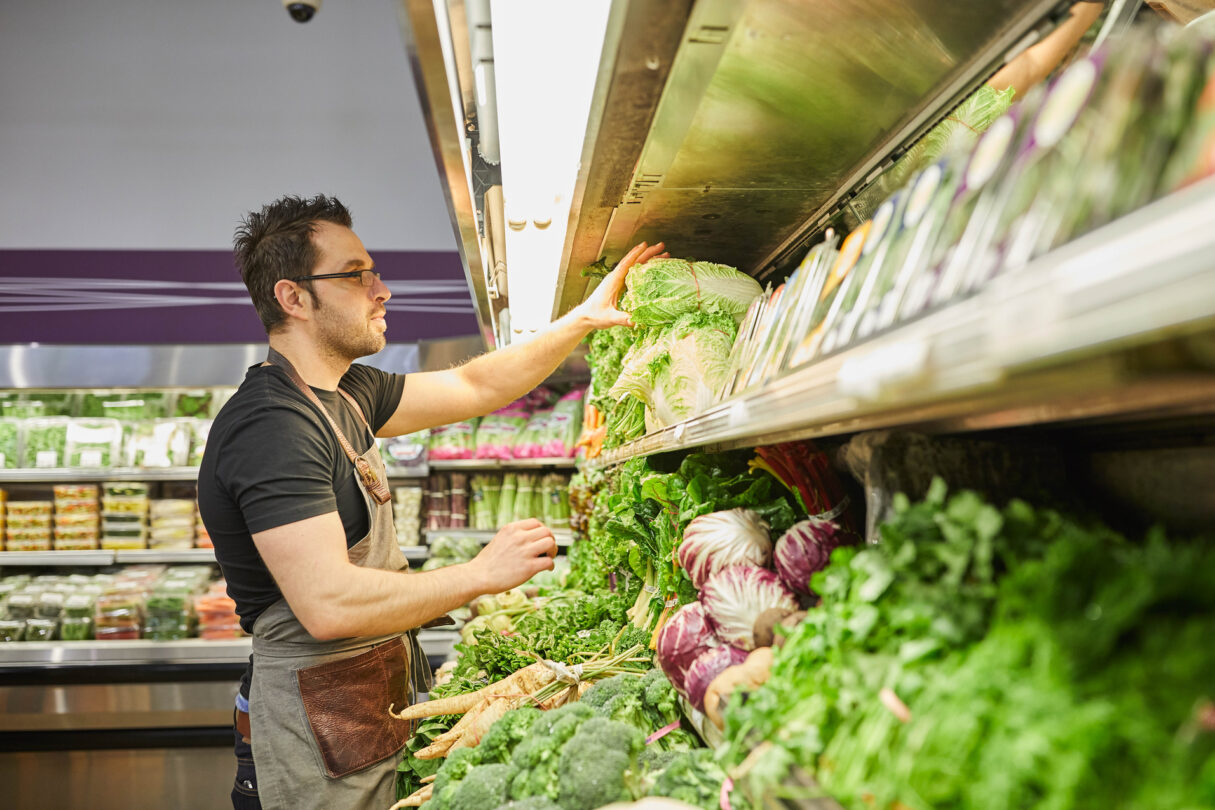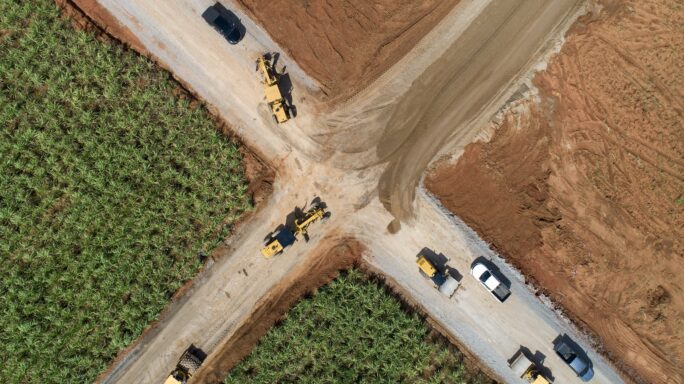Business process
Achieving a competitive advantage in the food and beverage industry with data analytics

Chocolate lovers may have felt like they’ve been short-changed in recent years following revelations that many of their favourite treats have been victims of “shrinkflation.” Food manufacturers have reduced the weight of products without shrinking the price.
Mars made the decision in 2013 that all their chocolate bars would be 250 calories or less, meaning, they eliminated their “King-sized” options.
The reduction in size highlights some of the challenges food and beverage manufacturers have. Brands such as Nestle and Mondelez International highlight factors like the cost of ingredients, international health regulations, exchange rates, and even distribution factors such as packaging and transport as the causes for “shrinkflation.”
It’s a tough time to be a food and beverage manufacturer, with prices being driven down, profit margins razor-thin and people spending a smaller proportion of income on food. You need to do more for less, which means re-evaluating the way your business works and utilising food and beverage data insights to take advantage of new opportunities.
So, what are some of the biggest food and beverage challenges for manufacturers today and how can you meet them?
How can Sage help your food and beverage business?
Discover how software from Sage can help you achieve a competitive advantage in the food and beverage industry with data analytics.
Understanding and handling changing customer tastes
A few years ago, McDonald’s started a huge restructuring plan after years of decreasing sales growth, with an admission by its chief executive that it hadn’t kept up with changing customer tastes.
This is an area of importance for all food and beverage companies. Consumers are now motivated to purchase products for consumption that are perceived as healthy and better for the environment.
In a world of digital and social media, food and beverage businesses need to be transparent, particularly with a millennial audience that expects authenticity and honesty. In the past, consumers may have trusted brands without question, but now they’re thinking more about the stories behind these businesses.
Millennials are more likely to question how the food and beverages they consume are made, who has made them, and how a business treats its environment and employees.
With brand perception, it’s the giant food and beverage manufacturing corporations that may be at a disadvantage – the smaller manufacturers can potentially speak to the millennial audience in a more authentic and relevant way.
In the US, another big brand that has recently fallen out of favour with millennials is legacy beer brand Budweiser, which has ceded ground to newer, more trendy craft beers, wines, and spirits.
For a giant brand such as Budweiser, this is not an easy thing to fix. One option is to diversify – and that’s what its operating company AB InBev is doing. In 2017, it announced a four-year, $2bn capital investment that will add capacity to 12 craft breweries, expanded its non-alcoholic beer range and aggressively pushed its other brands such as Stella Artois.
Food and beverage manufacturers are advised to build a close relationship with their customer base, keeping a close eye on millennial trends and desires, to unlock creative ways to reach that audience. They need to be nimble and innovative, so they can move products from research and development to the shelf as quickly as possible.
A recent example of a food manufacturer creating a new product catering to changing customer demand is when Mondelez International launched Oreo Thins, a thinner, lighter version of its popular biscuit. In the US, the product became the fourth most popular food and drink of 2016, making US$110.2m.
Janda Lukin, senior director of Oreo for Mondelez International, said the slimmer biscuits were rolled out in China to address tumbling sales, generating $40m in the first eight months. She noted that it took months for the company to perfect manufacturing of the Thins – early on, 60% of the biscuits were breaking, but after research and development, the rate came down to 3%.[1]
Understanding changing dietary needs
Food manufacturers also need to think about changing dietary needs. With 64% of the world’s population now actively excluding certain foods from their diet, retailers must now provide more relevant food choices tailored to the needs of customers.
Markus Stripf is the co-founder and CEO of Spoon Guru, which works with companies such as Woolworths in providing food searches that are tailored to an individual’s nutritional needs.
“In this day and age, we should be able to cater for people’s needs regardless of whether they have a nut allergy, follow a vegan diet, or simply prefer healthier options. We need to make it easy for consumers for their individual and specific needs, tastes and preferences.
“The good news is that we are seeing an influx of innovation from manufacturers in the vegan space to supermarkets heavily investing in artificial intelligence to be better positioned to offer highly personalised services to their customers, tracking their customers across multiple channels.”
However, Markus believes retailers struggling with e-commerce services are holding back food innovation by slowing down development cycles. He adds: “They have no advanced data-mining capabilities to understand customers’ individual dietary preferences and tastes, let alone use that knowledge to provide personalised and targeted services.
“If I have been buying only vegetarian foods from my retailer for the last 10 years, why are they still promoting a turkey to me before Christmas? It’s annoying to me as a customer and a complete waste of real estate from a marketing perspective.
“Customer segmentation [down to the segment of one] plus being able to infer customer preferences from their implicit and explicit interactions with a retailer across multiple channels are the future of retail. I just don’t know how long it will take for us to get there.”
How food and beverage data analytics can help
Although retailers have a way to go, there is a lot that food and beverage manufacturers can do for themselves. Thanks to Industry 4.0, they are starting to understand how the huge amounts of data generated from products and their daily operations can be turned into insights – offering a competitive advantage through actionable information, inefficiency and the driving of improvement.
Enterprise systems can help by managing complex and operational data to provide executives and employees with the means to connect day-to-day tactical operations and strategic goals – essentially digitising operations and benefiting from the data.
Successful companies provide tools to turn data into actionable evidence, according to Aberdeen:

Source: Data will drive the future of food production, Aberdeen Group
From here, analytics can provide executives with the information they need to make the right decisions when it comes to the future business strategy. Applications summarising data from multiple business units can help food and beverage businesses plan their purchasing, production, and maintenance.
Ensuring quality and compliance
Food and beverage companies need to juggle changing customer demands and competitive pressures but also make sure the basics are right. According to Aberdeen, the top two pressures food and beverage manufacturers face is ensuring compliance with current and future regulations and avoidance of product recalls.[2]
The Australia New Zealand Food Standards Code, in addition to constantly changing global standards designed to improve supply chain visibility, bring the threat of non-compliance in the form of fines.
Problems with “one-size-fits-all” regulation
Food and beverage manufacturers are advised to look at the technology they use closely, and understand whether it’s up to the task of supporting new best practices in areas such as product traceability and quality, supporting changing regulatory requirements, as well as providing technology such as cloud analytics to deal with changing consumer tastes and needs.
This could mean upgrading their ERP systems to enable additional technology capabilities. The graph below shows the improvements that can be made, supporting issues such as tight margins, changing consumer preferences, increased regulations and complex supply chains.

Source: Food and Beverage Manufacturers Updated ERP to Ensure Quality and Compliance
Become a data-driven food and beverage manufacturer
Food and beverage manufacturing is becoming increasingly complex – and it looks like one way for businesses to not only survive but thrive is to leverage data analytics.
Good products and operational efficiency have always been incredibly important. However, a critical differentiator will be taking advantage of data to hold and win that edge over the competition.
The key to success? Embracing technology and innovation, adapting capabilities and digitally transforming to become data-driven, smart and connected.
How can Sage help your food and beverage business?
Discover how software from Sage can help you achieve a competitive advantage in the food and beverage industry with data analytics.
[1] https://apnews.com/1d13badff94b4397beb39179b5c12d2d/oreos-get-thin-going-sophisticated-air
[2] Aberdeen Group, April 2016





